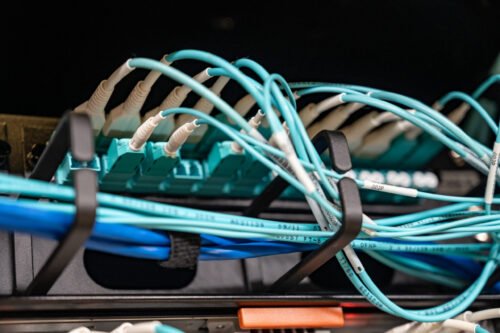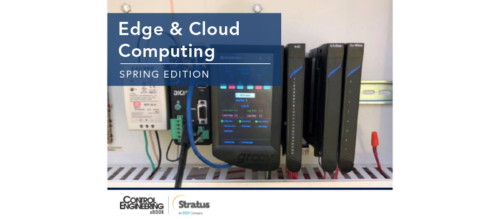Control Engineering’s E-News Letter for Embedded Control – March 2002
In this issue:
Special Embedded Systems Conference Issue
Plus Patents and lawsuits update
Petri Nets and Grafcet for modeling discrete logic
Spring Embedded Systems Conference
In Ohio, we talk about spring as a time of ‘breaking out,’ meaning flowers, tree buds, little animals, and joggers. In San Francisco last week at the spring Embedded Systems Conference, attendees and new product announcements were what were breaking out. Once again aisles were filled with engineers looking for the latest products and technology trends, as well as soaking up information in the technical conference sessions.
My overall impression was that almost all exhibitors were much more optimistic about business than last year. Most have seen some nice turnaround, although several of the newer, Linux-oriented companies have yet to see a profit. There was a little less of arguing Linux versus Microsoft Windows CE versus all the traditional real-time operating systems, and a little more explaining in detail what recent tool advances mean to questioning engineers.
Speaking of tools, major advances in integration, graphical representation, and ability to work with solutions from various suppliers under one IDE (integrated development environment) were in ample supply.
The MathWorks and Texas Instruments have jointly released a Developer’s Kit for TI DSP (digital signal processors). This allows bi-directional communication to the TI DSP software from Matlab and Simulink. You can model a system in Matlab, simulate and debug in Simulink then target Code Composer Studio from TI with the resulting code for any C5000/C6000 DSP target.
For more, visit https://www.mathworks.com and also https://www.ti.com
WindRiver Systems released VSPWorks, a development platform for applications powered by DSPs. The GUI-driven development tools are optimized for creating applications with small memory footprint requirements using single or multiple DSPs or a combination of DSP and CPU silicon.
For more, go to https://www.windriver.com
Rational Software announced it has teamed with The MathWorks to streamline software testing. Rational Test Real-Time is now integrated with Simulink and other MathWorks’ products for modeling, simulating, analyzing, and generating code for embedded systems.
For more, visit https://www.rational.com
QNX showed an IDE for embedded development based on the Eclipse project. I wrote about this programming tool in my last Embedded Control newsletter. I have started to use it while I learn Java 2 (actually v 1.3). I’ll have more on that later. Needless to say, it is a very powerful tool. I saw this beta version running on QNX and it looks good. Eclipse is based on a ‘plug-in’ paradigm, and QNX has exploited that with Rational Software to show a Rational tool plug in within the overall QNX environment. Did it work? Yes, they said, first time.
More information is available at https://www.qnx.com and at https://www.eclipse.org . Also see /ch-pcbased/pcbenews.asp
If you see a trend toward software integration here, it probably is. Integration was one of the key words this year.
I-Logix, meanwhile, unveiled new packaging for its Rhapsody UML-oriented development package. UML is a graphic modeling package where designers can design with graphic blocks then generate code. The company has packaged Rhapsody in three editions offering a choice for developers: Architect (base level), Designer (adds features), and Developer (full system). It has also released Rhapsody for Ada for you defense-oriented developers.
For more, go to https://www.ilogix.com
FastObjects embedded object-oriented databases from Poet Software offer single or multiple host applications in C++ or Java. News this year is that WindRiver certified FastObjects j2 and e7 products for VxWorks real-time operating system (rtos).
For more, visit https://www.fastobjects.com
Intrinsyc announced that Avnet Applied Computing will become a global distribution partner for products and services.
For more, go to https://www.intrinsyc.com
What about security after all those devices are Internet-enabled and potentially open to the outside world? Wedgetail Communications has thought of that and developed a solution. Announced at the conference were that the company has joined WindRiver’s WindLink partner program enabling developers using VxWorks to add security features and that it has a technology partnership using its Java technology with Object Technology International, a subsidiary of IBM.
For more, visit https://www.wedgetail.com and also https://www.oti.com
Microsoft showed a BMW dashboard featuring a graphic display for global positioning service built on Windows CE for Automotive.
For more, go to https://www.microsoft.com
On the hardware side:
Kontron, which has recently purchased companies such as Teknor, Industrial Computer Source, and PEP Modular Computers, showed many new products including a CompactPCI Fast Ethernet Switch, an Intel Pentium 4 in a PCI-bus single board computer, an embedded ATX board using two Intel Xeon processors, PEP VME processor board with Motorola MPC8245 PowerPC processor, and a PEP CompactPCI single board computer based on IBM PPC750CX PowerPC processor.
For more, see https://www.kontron.com
WinSystems has a PC/104-Plus SoundBlaster Pro-compatible audio accelerator module and Datalight’s Sockets on a PC/104 board offering most network transmission protocols.
For more, visit https://www.winsystems.com
Trenton Technology’s XPI single board computer incorporates a Xeon processor and E7500 chipset into a PCI/ISA card. It features dual Ethernet ports and DDR memory.
For more, go to https://www.trentonprocessors.com
Applied Data Systems (ADS), along with Voxtec, introduced Phraselator, a wireless phrase recognition device developed by ADS. This small, PDA-looking device accepts spoken input in one language and ‘speaks’ in a selected second language. These are now used in Afganistan so that soldiers and other personnel can speak English with the device outputting in Arabic, Urdu, or other local languages.
For more, visit https://www.applieddata.com
MEN Micro exhibited a Gigabit Ethernet PC-MIP module, a universal counter/timer on a standard M-Module mezzanine card compatible with VME, VXI, CompactPCI, PXI, or PCI, and a 6U CompactPCI single board computer with 850MHz Intel Pentium III or Celeron.
For more, visit https://www.menmicro.com
VerasLogic’s Panther PC/104-Plus single board computer features a low-power Intel Pentium that is fanless and is said to draw 24% less power that its competition.
For more, go to https://www.versalogic.com
Z-World unveiled BL2100 Smartcat, a low-cost single board computer in a 4.14 x 3.41-in. form factor featuring two configurations with Ethernet, two without, and all have 40 digital I/O points, three RS-232/485 serial ports, a Rabbit 2000 microprocessor and more.
For more, visit https://www.zworld.com
Check out daily news on Control Engineering Online at / for more products and updates.
Back to top
Patents and lawsuits update
I have received quite a bit of feedback on the Schneider patent lawsuits. Most comments were requested to be kept confidential, and if I were even to comment, it would be incriminating. But, I have heard a little from the OPC Foundation. This is the case of the Schneider patent for moving data from a PLC to a spreadsheet. There is some speculation that using OPC to accomplish this may be a violation of the patent. OPC Foundation officers believe that this is not the case. That is the strongest statement I have from them as of this writing. When a company joins the Foundation, it signs an agreement that it will not patent or otherwise seek to restrict technologies developed as a result of the work of the Foundation. Schneider was a member of the Foundation, but the current roster on the Web site does not contain a reference to it. A spokesman stated that the membership roster on the Web site is accurate.
For more, go to https://www.opcfoundation.org
An anonymous writer faxed a letter defending Schneider by pointing to all the patents that companies like Rockwell Automation (Allen-Bradley) and GE have. I think that the writer truly states that Rockwell is aggressive in pursuing infringements of its patents, as is every other company that has some. Rockwell has patents on its proprietary products, technologies, etc.
I think that the point being raised in the industry is that one expects proprietary technology to be patented. Many in our industry, though, have been pushing for ‘open’ technology. They wish to have products from different suppliers work together with as little integration pain as possible. Most thought that Web technologies and OPC were open standards and were surprised that someone claims patents on them. No one takes Schneider to task for having patents on its proprietary products, like the inner workings of a Modicon PLC, for instance. The industry just wants to know what is ‘open’ and what is ‘proprietary.’
Thoughts, information, or opinions? Send me a message: gmintchell@cahners.com .
Back to top
Petri Nets and Grafcet for modeling discrete logic
Petri Nets and Grafcet are a superb means of modeling discrete events in a series. In fact, Grafcet is a forerunner of Sequential Function Charts, the ‘organizing principle’ of the IEC 61131 programming languages.
Rene David and Hassane Alla have written ‘Petri Nets & Grafcet: Tools for modelling discrete event systems.’ The book is published by Prentice Hall and is an excellent introduction to the system. If you think about control systems and how to better plan and organize your control programs and have yet to learn this methodology, I highly recommend this book.
As always, I thrive on feedback. Send your comments to gmintchell@cahners.com .
Back to top
Do you have experience and expertise with the topics mentioned in this content? You should consider contributing to our CFE Media editorial team and getting the recognition you and your company deserve. Click here to start this process.





